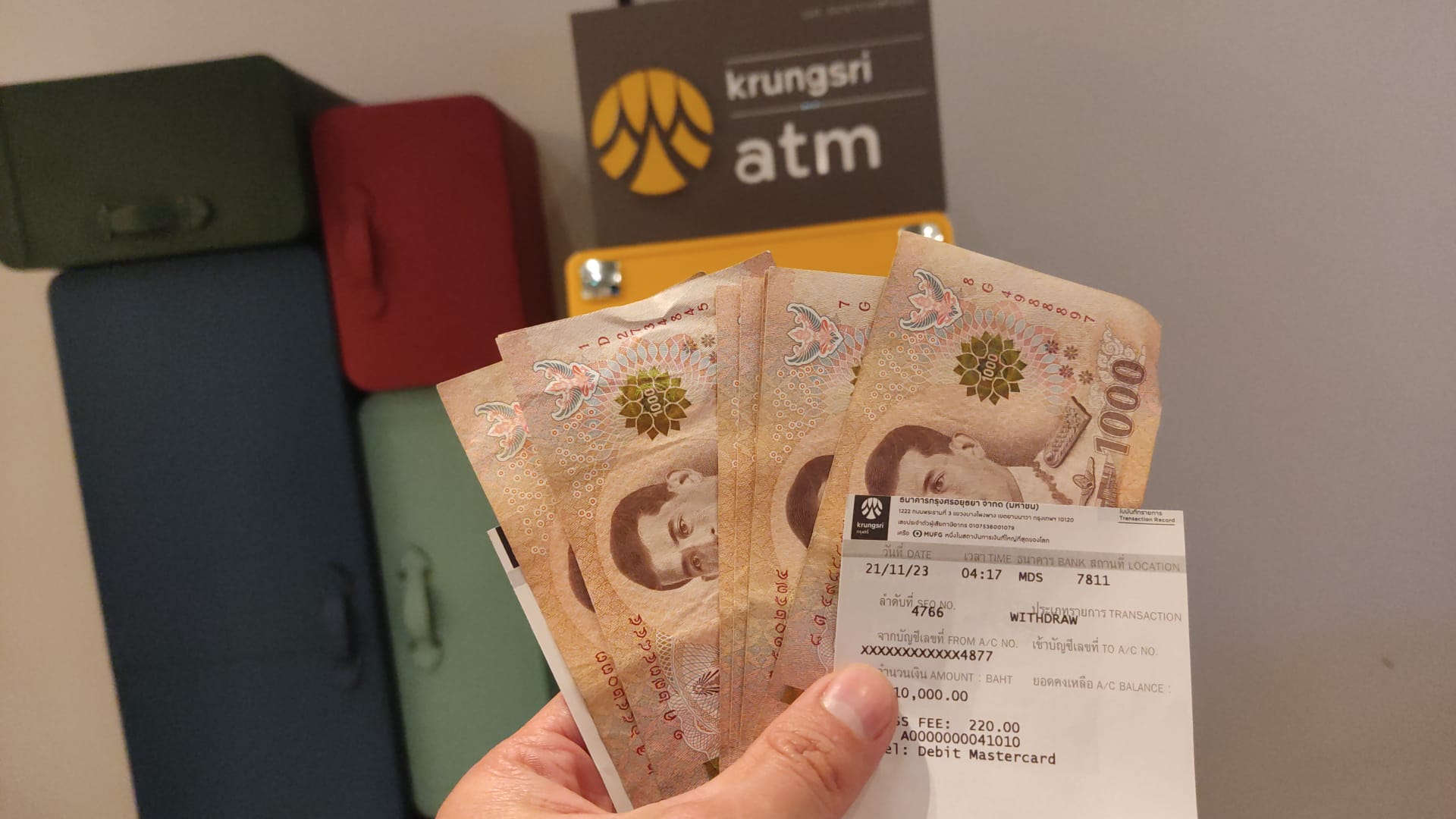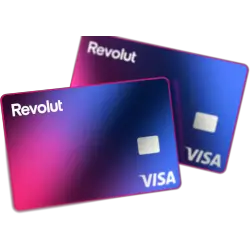Navigating ATM Fees in Thailand: A Guide for New Arrivals
- Understanding ATM Fees in Thailand
- Bank Partnerships and Fee Waivers
- Best Banks for Foreigners
- Krungsri Bank – A Common Choice for Travelers
- Lower Fees:
- Higher Withdrawal Limit:
- Widespread Availability:
- Aeon Bank – The Cost-Effective Alternative
- Lowest Fees:
- Limited Availability:
- Making the Right Choice
- Using No Conversion Fee Cards like Revolut: Avoid Double Charges
- Avoid Double Charges:
- Real Exchange Rates:
- Easy to Manage:
- Choosing Local Currency for Transactions
- Avoid Dynamic Currency Conversion:
- Maximize Savings:
- Choosing the right ATM and use the right card matters
- Alternative Methods to Access Cash
- Currency Exchange:
- Traveler’s Checks:
- International Money Transfers:
- Tips for Managing Cash in Thailand
- Safety Tips for Using ATMs
- Traveler Experiences
- Conclusion
- Frequently Asked Questions
Welcome to Thailand, a vibrant fusion of scenic beauty and cultural richness, attracting millions of travelers each year. As you embark on this unforgettable journey, it's crucial to understand the nuances of managing your finances here, especially when it comes to ATM usage. This guide is tailored for those just landing in the country, helping you navigate ATM fees and find the most cost-effective ways to access cash.
Understanding ATM Fees in Thailand
Thai ATMs are convenient but can be costly for foreigners. Most charge a withdrawal fee (often around 220 THB per transaction) in addition to what your home bank might charge. Furthermore, the exchange rates offered by ATMs can be less favorable. These fees can quickly add up, affecting your travel budget.
Bank Partnerships and Fee Waivers
Before you depart, check if your bank has partnerships with Thai banks. Some international banks have agreements that allow reduced fees or even fee waivers when using certain Thai ATMs. This information can usually be found on your bank's website or by contacting customer service.
Best Banks for Foreigners
In Thailand, banks like Siam Commercial Bank (SCB), Kasikornbank (KBank), and Bangkok Bank are known for their wide ATM networks. While they still charge fees, these banks are reliable and have English language support, making transactions easier for foreigners.
Krungsri Bank – A Common Choice for Travelers
Krungsri Bank stands out as a popular choice for many travelers in Thailand. Here's why:
Lower Fees:
Krungsri ATMs charge a fee of 220 THB (approximately $6) per withdrawal, which is relatively lower compared to fees charged by other local banks.
Higher Withdrawal Limit:
You can withdraw up to 30,000 THB in one transaction, making it convenient if you need a larger amount of cash.
Widespread Availability:
Krungsri ATMs are easily found in Bangkok and other major tourist destinations, ensuring accessibility.
Aeon Bank – The Cost-Effective Alternative
While Krungsri offers a balance of convenience and lower fees, Aeon bank ATMs provide an even more economical option:
Lowest Fees:
Aeon ATMs charge only 150 THB (around $4) per transaction, making them the cheapest option for ATM withdrawals in Thailand.
Limited Availability:
The catch is their lesser availability. Aeon ATMs are not as widespread as those of Krungsri or other local banks, but they can still be found in some shopping malls and urban areas.
Making the Right Choice
Your choice between Krungsri and Aeon banks should be guided by a balance between fee savings and convenience. If you're staying in or visiting areas with Aeon ATMs, they are a great option for saving on fees. However, for ease of access and broader availability, especially in less urbanized areas, Krungsri is a reliable and cost-effective choice.
Remember, while saving on fees is important, convenience and accessibility should also be key factors in your decision, ensuring you have a hassle-free experience while exploring the beauty and culture of Thailand.
Using No Conversion Fee Cards like Revolut: Avoid Double Charges
When withdrawing cash in Thailand, using a card that doesn't charge a conversion fee can be a game-changer. Cards like Revolut are becoming increasingly popular among savvy travelers for this reason. Here's how they can benefit you:
Avoid Double Charges:
Traditional bank cards often charge a fee for currency conversion on top of ATM withdrawal fees. No conversion fee cards like Revolut eliminate these currency conversion charges, saving you money.
Real Exchange Rates:
These cards usually offer real exchange rates, which are often more favorable than the rates provided by ATMs or local currency exchange services.
Easy to Manage:
With user-friendly apps, you can manage your funds, track your spending, and even exchange currencies easily on your phone.
Choosing Local Currency for Transactions
An important tip to remember, whether using a traditional bank card or a card like Revolut, is always to choose to be charged in the local currency (Thai Baht, in this case) when withdrawing cash or making payments.
Avoid Dynamic Currency Conversion:
Some ATMs and card machines offer the option to be charged in your home currency. This is known as Dynamic Currency Conversion (DCC), and it often comes with poor exchange rates and additional fees.
Maximize Savings:
By choosing to be charged in Thai Baht, you avoid DCC's inflated costs and use the more favorable exchange rate offered by your no conversion fee card.
Choosing the right ATM and use the right card matters
Combining the use of a no conversion fee card like Revolut with the strategic choice of ATMs and always opting for transactions in local currency, you can significantly reduce the financial burden of fees during your travels in Thailand. This approach ensures you get the most out of every Baht spent, letting you enjoy your Thai adventure without the worry of hidden charges or unfavorable exchange rates.
Alternative Methods to Access Cash
Consider alternatives to ATMs:
Currency Exchange:
Often found in airports, malls, and tourist areas, these can be a good option, but be mindful of exchange rates. Extra fees are usually hidden in the conversion rates which are not at the advantage of the consumer, and are far away from the mid-market exchange rate.
Traveler’s Checks:
Safer than carrying cash, but not all places accept them.
Traveler's Check: What It Is, How It's Used, Where to BuyInternational Money Transfers:
Services like Wise (formerly TransferWise) or Western Union can be used to transfer money to Thailand, which you can pick up in local currency by the intermediary of a friend that can withdraw the currency from local bank.
Tips for Managing Cash in Thailand
- Withdraw large amounts less frequently to minimize fees.
- Keep a daily budget to manage your spending.
- Always have some cash on hand, as not all places accept cards.
Safety Tips for Using ATMs
- Use ATMs in secure, well-lit areas, preferably during the day.
- Be mindful of your surroundings and protect your PIN.
Traveler Experiences
Conclusion
By being informed about ATM fees and exploring alternative options, you can enjoy your Thai adventure without unnecessary financial stress. Remember, every traveler’s experience is unique, so feel free to share your tips and stories in the comments below.
Frequently Asked Questions
- What should new arrivals in Thailand know about ATM fees, and how can they minimize these costs?
- New arrivals should know that ATMs in Thailand often charge withdrawal fees. To minimize costs, they can use ATMs less frequently with higher withdrawal amounts, consider using a travel card that reimburses ATM fees, or exchange currency at banks.

Michel Pinson is a Travel enthusiast and Content Creator. Merging passion for education and exploration, he iscommitted to sharing knowledge and inspiring others through captivating educational content. Bringing the world closer together by empowering individuals with global expertise and a sense of wanderlust.


